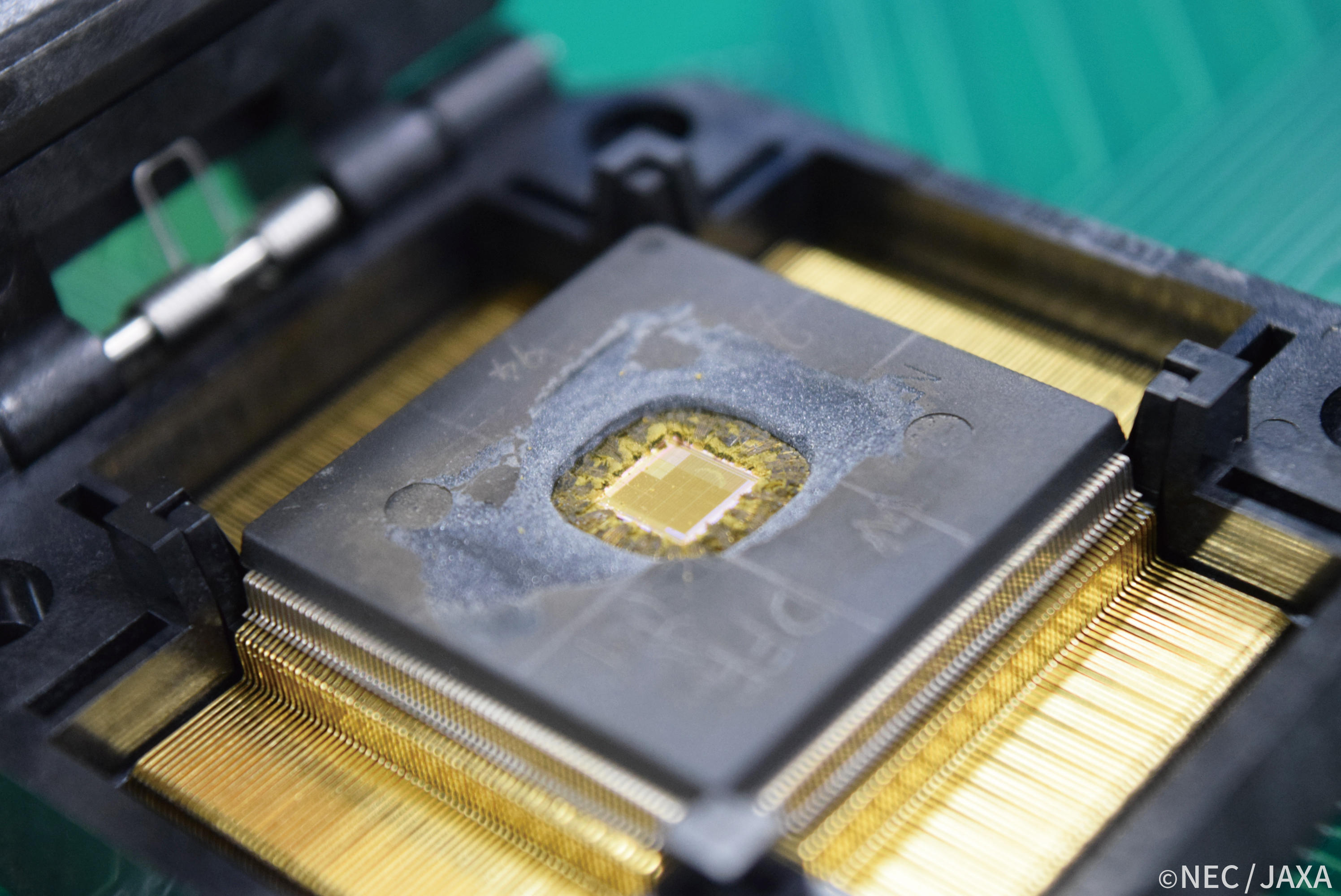Research and Development Directorate
What is NB-FPGA,
That will Enable the Advancement of Spacecrafts?
The Research and Development Directorate is leading the Innovative Satellite Technology Demonstration Program, which provides in-orbit demonstration opportunities to test equipment, parts, and microsatellites developed by private businesses and universities. One of such items loaded onto the first demonstration satellite is the NB-FPGA (NanoBridge-FPGA) developed by the Nippon Electric Company, Ltd. (NEC). FPGA is an integrated circuit where the functions can be customized in accordance to the user's intended use. Traditional FPGA made with semiconductor switch are susceptible to the effects of radiation, and are limited in how small they could be made because the memory for recording information need to be incorporated into them. On the other hand, the NB-FPGA uses an atomic switch that switches its wiring by moving metallic atoms. It reduces the ratio of errors occurring from the effects of radiation, while also making it possible to reduce its size and lessen the amount of power consumption. NEC says they applied for this program because they wished to verify radiation resistance in the extremely strong radiation environment of space.

Meanwhile, JAXA and NEC had each conducted joint research with the National Institute for Quantum and Radiological Science and Technology, and has been experimenting and analyzing the effects of radiation on NB-FPGA. The results were put together into a research paper. The chief staff at JAXA, TAKEUCHI Kozo, looks back on this research and comments, "On the ground, we use accelerators and irradiate heavy particles in order to simulate the environment in space, but we observed many errors from the semiconductor layer in which preventative measures had not been taken. And so, in addition to pulse laser irradiation, we also combined other simulations such as on the insides of the semiconductors and the circuit, in order to categorize and consider the errors. As a result, we came to the conclusion that with our current conditions, there were no errors originating from the NB by the irradiation of heavy particles. Our research paper which announced this finding received an award for the most outstanding research paper at an academic conference, so our hard work has paid off."
NB-FPGA was loaded on the RAPid Innovative payload demonstration Satellite-1 (RAPIS-1) and is currently performing demonstration tests in orbit. It is being used to compress the images from the monitor cameras, and is currently operating without problems. Takeuchi says, "FPGA is an essential part for spacecrafts. By combining this with NB technology born in Japan, I think we will be able to create even better satellites." In the future, this technology is expected to be used not only in space but also in the automobile and medical fields. Research will continue with the goal of achieving its commercial application.
For more information on strategic research and development of parts for space:
Profile

|
|
|---|
All the images are copyrighted ©JAXA unless otherwise noticed.
- Home>
- Global Activity>
- Public Relations>
- JAXA’s>
- JAXA's No.79>
- What is NB-FPGA, That will Enable the Advancement of Spacecrafts?